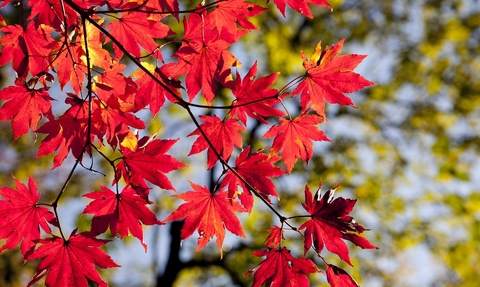
Maple leaves in Autumn
Where to see autumn colour
In autumn, the vibrant colours of summer flowers are replaced by equally dazzling displays of purple, red, orange, and yellow in our native woodland. As the green of chorophyll in leaves is broken down, it reveals yellow flavonols, orange carotenoids and red to purple anthocyanins. The mixture of these compounds differs between species to give us such magnificent displays.
Queenswood Country Park & Arboretum
In the Arboretum at Queenswood you’ll see a spectacular kaleidoscope of colour with zingy yellows and bright reds glowing from October to November. Featuring tree species from around the world, autumn colour starts with maples, American first and then Maples from the Caucasus and Asia including our large collection of Japanese Maples, then berry-bearing Rowans and finally exotic Oaks.
Grab an Autumn Tree Trail leaflet from the visitor centre to help identify your favourites. Children will love roaming the woods and exploring the adventure playground, followed by a hot chocolate in the cafe.
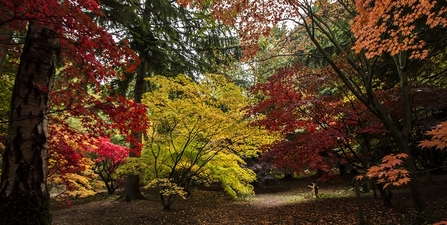
Queenswood's arboretum in autumn (c) Natalie Jolley
Bodenham Lake
Another popular spot just down the road is Bodenham Lake where the stunning autumn colours from native trees growing on slopes nearby are reflected on the water. On a sunny day, it’s an uplifting sight, so too is seeing otters playing and feeding in the lake. Once elusive, the otters are now more frequently spotted as a family group has made the lake their home, however there’s always an element of luck in seeing one. The nature reserve is particularly good for the long-legged and elegant heron and egret with five species recorded in the last year or two.
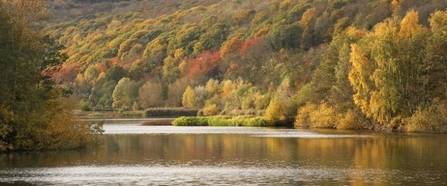
Stunning autumn colours at Bodenham Lake
Wessington Pasture
Autumn brings the countryside alive and Wessington Pasture near Woolhope, a native broad-leaved woodland with pasture areas, is a delight to visit this time of year. The vibrant colours come from the limes, spindle, sweet briar, oak and stunning ancient hazel trees at the top of the slope. Enjoy following the paths that wind their way through the woodland, with luck you’ll see fallow deer and catch a glimpse of nuthatch and tree creeper, birds that climb up tree trunks looking for insects and spider.
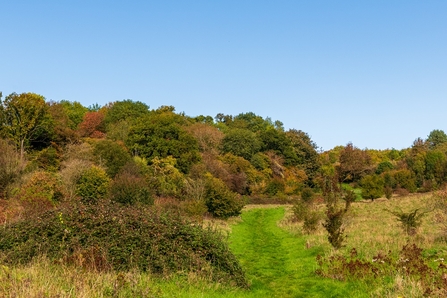
Wessington Pasture Nature Reserve (c) Paul Lloyd
Littley Coppice
Close to West Malvern, this ancient woodland is traditional managed with coppicing of the hazel. Here, there’s also beech, rowan, wild cherry and field maple providing a stunning display of autumnal colour while the red and purple berries and fruits of yew, holly, hawthorn, damson and spindle are food for wildlife as they build up reserves to last the long cold winter.
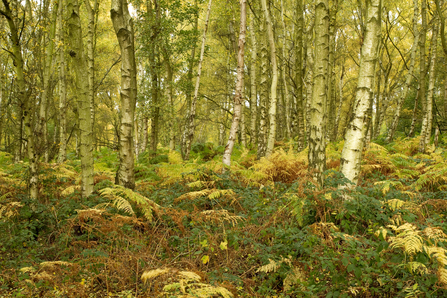
Birch woodland in autumn (c) Ben Hall/2020VISION
